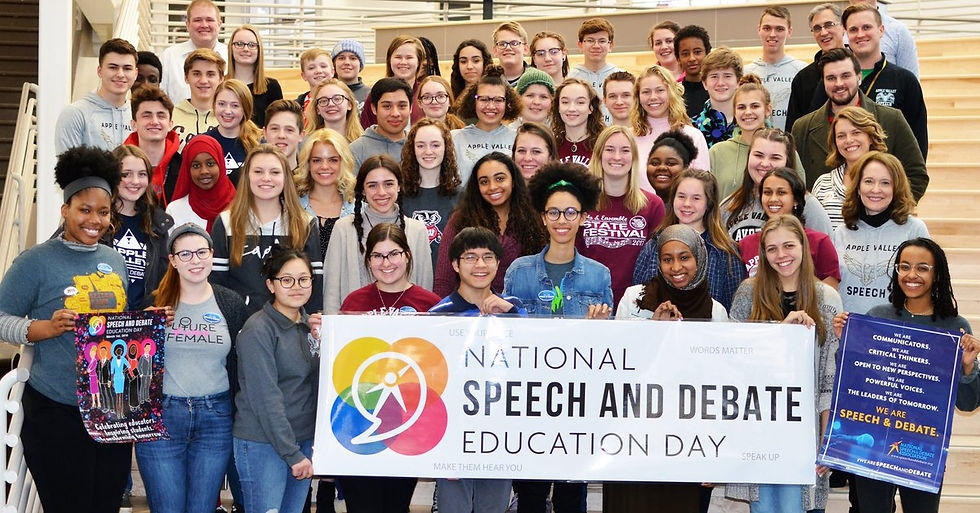A Time-Honored Tradition: What is Lincoln-Douglas Debate?
- Vestavia Pillar
- Dec 2, 2024
- 2 min read
By: Aditya Sheelavant and Eric Wang

Photo courtesy of Google
In 1858, two senatorial candidates from Illinois held a series of fierce debates on critical contemporaneous topics, namely, the questions of slavery and states' rights. Both incumbent Senator Stephen Douglas and challenger Abraham Lincoln hinged their arguments upon philosophical and moral truths, a tradition that gave rise to the modern Lincoln-Douglas Debate. The National Speech and Debate Association provides a perhaps more formal definition, describing Lincoln-Douglas Debate as “a competitive speaking activity that involves two debaters arguing for and against a resolution,” with a particular focus on “the conflicting values of social and philosophical issues.” Yet, what exactly does an “LD” Debate look like, and why has it captured the hearts and minds of so many high-achieving students?
Every LD debate is centered around proving the truth or falsity of a resolution. The Affirmative side’s job is to prove it to be true, whereas the Negative side’s job is to prove it false. Throughout many speeches, from the constructive to the multiple rebuttals, each side must use powerful rhetoric and strong evidence to convince a judge to either “affirm” or “negate” the resolution. The most recent resolution was, “Resolved: The United States ought to adopt a wealth tax.” Affirmative cases might argue that a wealth tax is beneficial because it helps address economic inequality within the United States, while the Negative might argue that a wealth tax is unjust because it punishes success. The judge ultimately decides a winner based on how one side interacts with the other—did the Affirmative prove that a wealth tax isn’t unjust towards successful people, eliminating any meaningful drawbacks? Did the Negative prove that a wealth tax, despite its intentions, simply worsens economic inequality, making it unjust to the rich and poor alike? Given the nature of their task, both sides require considerable research to learn the ins and outs of each resolution.
Students research for months in preparation for tournaments, which take place at the local and national levels. Local tournaments are relatively small with upwards of thirty competitors in the LD pool. Schools take turns hosting to allow for debaters who may not have the resources to compete far away. In fact, VHHS hosts the first Birmingham-area tournament of the year every September—Vestavia Novice. National tournaments can span multiple days with hundreds of competitors. They take place throughout the country, occurring almost every weekend of the year—just last week, Glenbrooks South High School of Chicago, Illinois hosted the Glenbrooks Speech and Debate Tournament, with almost two hundred LD participants. Regardless of its scale, each tournament encourages students to challenge themselves and develop powerful research and public speaking skills that will continue to prove valuable through adulthood. Debate tournaments also make for great social platforms for students to meet others with similar interests and passions.
All in all, LD debate is an excellent activity for anyone who’s looking to learn about the world, wants to surround themselves with like-minded peers, or is interested in a future of leadership. The VHHS debate team is open to all each year, so don’t miss the opportunity to sign up this upcoming spring!




Comments